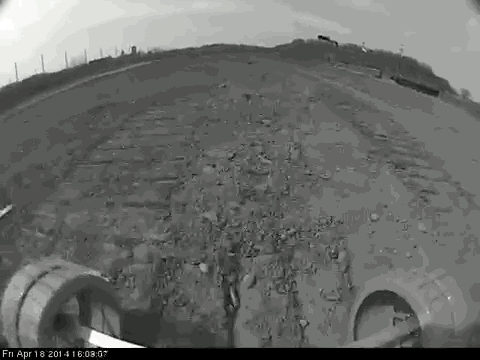“The typical quote from NASA for the cost of a mission like we’re doing is $1 billion,” says Kevin Peterson, the chief technology officer of Astrobotic. “We believe we can do it for a tenth of that, about $100 million.”
Astrobotic is competing with 17 other teams to win the Google Lunar XPRIZE. To winner of the $30 million grand prize must land a rover on the moon; drive it for 500 meters (1,640 feet) along, above or below the lunar surface; and send back a high-definition TV signal for the world to see.
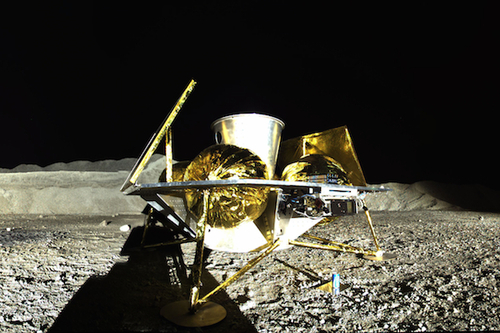
Astrobotic brought its Griffin lander prototype to a Pittsburgh slag heap for publicity photos simulating the lunar environment. Top GIF: Astrobotic sent a prototype of its autonomous lunar rover on an obstacle avoidance test drive in April 2014. The rover’s brain uses electronics from GE that process and compress data from lasers and cameras. Photo and GIF credit: Astrobotic.
The biggest budget item for getting stuff to the moon is the launch vehicle that boosts the cargo out of Earth’s atmosphere. Peterson plans to strap their rover-ferrying lander onto the relatively inexpensive SpaceX Falcon 9 rocket. But Astrobotic is driving costs down in other ways–by equipping moon robots with cheaper and more powerful electronic brains .
The company has teamed with GE’s Intelligent Platforms unit, which makes ruggedized electronics for fighter jets, tanks and the oil and gas industry. GE workers harden off-the-shelf, energy efficient chips to survive severe vibrations, shock, dust and the vacuum of space.
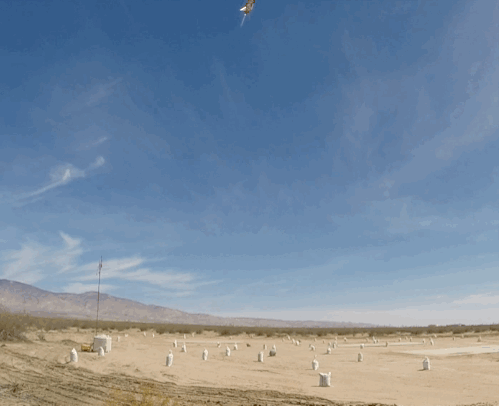
Astrobotic tested its autolanding system aboard a rocket-powered technology demonstration vehicle supplied by Masten. Here the vehicle touches down after flying a distance from its launch site. GIF credit: Astrobotic.
“We needed to enable high-performance computing while using as little energy as possible,” said GE’s Rubin Dhillon. His colleague, applications engineer Dustin Franklin, said the technology for Astrobotic was “an order of magnitude” cheaper and provided greater processing capability than systems designed specifically for space exploration. “The craft couldn’t land without it,” Franklin says. “It tells the lander: ‘Hey, you’re a little off here. You need to correct.’”
The Griffin lander is 5.2 feet high and 14.8 feet wide. It can carry more than half a ton of cargo to lunar orbit and almost 600 pounds to the moon’s surface. Astrobotic expects it to touch down on the moon within 330 feet of a predetermined landing spot.
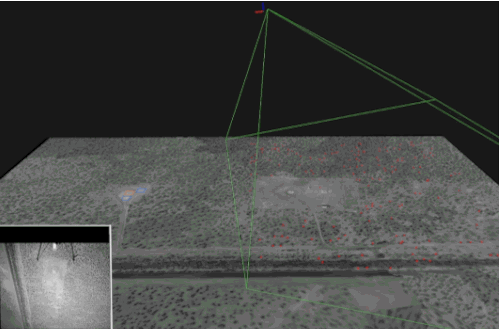
The Astrobotic Autolanding System uses lasers and cameras that feed real-time data into GE’s MAGIC1 processor. The computer matches the information to a map database and provides guidance and navigation. Photo credit: Astrobotic
This level of accuracy is considerably better than previous lunar landings. Neil Armstrong and Buzz Aldrin parked the Apollo 11 lander some three miles from where it was supposed to be.
Naturally, the Griffin won’t be able to rely on GPS. Its guidance and navigation system uses cameras, lasers and inertial sensors to adjust its descent and avoid obstacles. It will compare real-time imaging and range-finding to highly accurate moon maps stored in the memory on the GE MAGIC1.
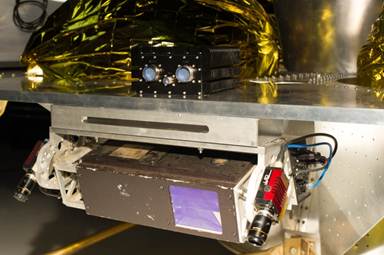
A closeup of the GE MAGIC1 computer. Photo credit: Astrobotic
The computer will crunch the sensor data and to tell the lander where it is. Sounds complicated, but it relies on similar graphics chips to those found in state-of-the-art video game consoles.
Once the Griffin safely arrives, it will release Astrobotic’s Polaris rover. To drive the distance it needs for the XPRIZE or other missions without getting stuck or falling in a crater, the rover is equipped with a GE electronics package featuring NVIDIA’s next-generation Tegra K1 processor. This is the same chip being used to power the Tesla electric car’s center display and in high-end Android and Apple tablets.
The Polaris will use the processor for navigation with the unit’s cameras and lasers. The electronics package will also massively compress a live TV feed so it can be sent to the lander, which will then relay it to Earth.
“This GE equipment is much more powerful than what NASA would fly,” Peterson says. “These computers are the brains of our lander and rover. They are really game changers.”
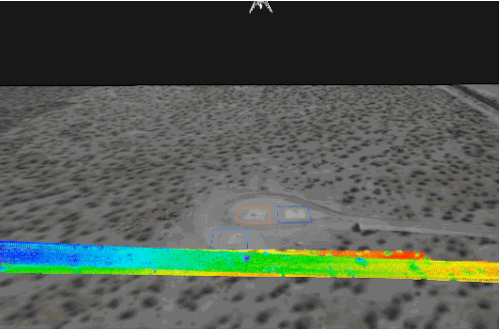
The Astrobotic Autolanding System uses downward-facing laser imaging, detection and ranging to map the surface below for location-finding and obstacle avoidance. GIF credit: Astrobotic
Peterson estimates the cost of landing Griffin on the moon will exceed the $30 million purse being offered to the XPRIZE winner. That’s why in June Astrobotic, which was spun off from Carnegie Mellon University to compete for the prize, announced that it was inviting competitors to hitch a ride on its lander and engage in a NASCAR-like race over the final 500 meters to crown a winner. “Not only does the shared launch create a more exciting race for the Prize, it would be the first international competition beyond Earth orbit,” Astrobotic CEO John Thornton said on the company’s blog.
Peterson said that Astrobotic has already signed agreements to carry four payloads on the Griffin and was in talks with others. The price of the mission - $500,000 per pound of cargo to the moon– makes his offer appear attractive.
But Peterson said that price could drop by an order of magnitude in the future if SpaceX can cut launch costs and expand the volume of cargo. (The rocket company is already pursuing both goals.) “If we can get the cost down to $50,000 a pound to carry cargo to the moon, then the mission for our customers would cost $10 million,” he says. “Then you suddenly have a large pool of people, organizations and countries on Earth that could do science and other pursuits on the moon. This is paradigm shifting.”
The deadline for the XPRIZE moon landing - Dec. 31, 2015 - is tight, and Astrobotic doesn’t expect to launch its lander until 2016. “The prize isn’t enough to fly our payload alone,” says Peterson. “We’re negotiating with a number of countries to carry their payloads up with ours, so we might have to skip the competition if they don’t move their deadline.”
